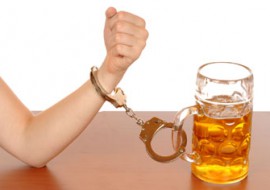You’ve probably heard of “alcohol abuse,” “alcohol dependence,” or “alcoholism.” Maybe you know the new term doctors use, “alcohol use disorder.”
Alcohol use disorder is a potentially fatal disease, characterized by cravings, tolerance (needing more), physical dependence, and loss of control over consuming alcohol. Alcohol intoxication may or may not be obvious to observers. Even in highly functional alcoholics, chronic alcoholism can lead to physical problems. Most common is damage to your liver, which over time can lead to cirrhosis (scarred liver). Other risks include depression, stomach bleeds, pancreatitis, high blood pressure, heart failure, numbness and tingling in your feet and changes in your brain. Alcoholism can also increase your risk for infections including pneumonia, tuberculosis, and chronic gastritis.
Alcoholism can also lead to impotence in men, damage to the fetus in pregnant women, and an elevated risk of cancer of the larynx, esophagus, liver, breast, stomach, pancreas, and upper gastrointestinal tract. Because heavy drinkers seldom have adequate diets, they may have nutritional deficiencies. Heavy drinkers typically have impaired liver function, and up to one in five develops cirrhosis.
What Causes Alcoholism?
The cause of alcoholism seems to be a blend of genetic, physical, psychological, environmental, and social factors that vary among individuals. A given person’s risk of becoming an alcoholic is three to four times greater if a parent is alcoholic. Some children of alcohol abusers, however, overcome the hereditary pattern by not drinking any alcohol at all.
Warning Signs
You may have an alcohol use disorder if you:
- Drink more, or longer, than you plan to
- Have tried to cut back or stop more than once and couldn’t
- Spend a lot of time drinking, being sick, or hungover
- Want alcohol so badly you can’t think of anything else
- Have problems with work, school, or family because of your habit (or because you’re sick after having alcohol)
- Keep drinking even though it has caused problems for you or your relationships
- Quit or cut back on other activities that were important to you in order to drink
- Have found yourself in situations while drinking or afterward that made you more likely to get hurt
- Keep having alcohol even though it made you depressed or anxious, hurt your health, or led to a memory blackout
- Have to drink more than you used to for the effect you want
- Found that you had withdrawal symptoms when the buzz wore off, like trouble sleeping, shakiness, restlessness, nausea, sweating, a racing heart, a seizure, or seeing, hearing, or feeling things that aren’t there.
If you’ve had two or three of those symptoms in the past year, that’s a mild alcohol use disorder. It’s a moderate disorder if you’ve had four to five. If you’ve had six or more, that’s severe.
How Much Is Too Much?
Keep in mind that a serving of alcohol is:
- 12 ounces of regular beer
- 8-9 ounces of malt liquor
- 5 ounces of wine
- 3-4 ounces of fortified wine (such as sherry or port)
- 2-3 ounces of cordial, liqueur, or aperitif
- 1.5 ounces of brandy, cognac, or 80-proof distilled spirits
Many places over-serve booze. It’s easy to do, even at home, if your wine or beer glasses are big.
An alcohol use disorder isn’t just about how much you drink. It’s also about:
- How often you drink
- What the effects are
- What happens when you try to cut back
If I Think I Have a Problem
If you’re worried that you might have alcohol use disorder, don’t try to quit cold turkey on your own. The withdrawal can be dangerous. You can get help.
Talking with your doctor is a good first step. He can:
- Tell you if you need assistance
- Work with you to put together a treatment plan, possibly including medication
- Refer you to a support group or counseling.
Treatments & Drugs
Treatment for alcohol use disorder can vary, depending on your needs. Treatment may involve a brief intervention, individual or group counseling, an outpatient program, or a residential inpatient stay. Working to stop the use of alcohol to improve quality of life is the main treatment goal.
Treatment for alcohol use disorder may include:
- Detox and withdrawal. Treatment may begin with a program of detoxification or detox — withdrawal that’s medically managed — which generally takes two to seven days. You may need to take sedating medications to prevent withdrawal symptoms. Detox is usually done at an inpatient treatment center or a hospital.
- Learning skills and establishing a treatment plan. This usually involves alcohol treatment specialists. It may include goal setting, behavior change techniques, use of self-help manuals, counseling and follow-up care at a treatment center.
- Psychological counseling. Counseling and therapy for groups and individuals help you better understand your problem with alcohol and support recovery from the psychological aspects of alcohol use. You may benefit from couples or family therapy — family support can be an important part of the recovery process.
- Oral medications. A drug called disulfiram (Antabuse) may help to prevent you from drinking, although it won’t cure alcohol use disorder or remove the compulsion to drink. If you drink alcohol, the drug produces a physical reaction that may include flushing, nausea, vomiting, and headaches. Naltrexone (Revia), a drug that blocks the good feelings alcohol causes, may prevent heavy drinking and reduce the urge to drink. Acamprosate (Campral) may help you combat alcohol cravings once you stop drinking. Unlike disulfiram, naltrexone and acamprosate don’t make you feel sick after taking a drink.
- Injected medication. Vivitrol, a version of the drug naltrexone, is injected once a month by a healthcare professional. Although similar medication can be taken in pill form, the injectable version of the drug may be easier for people recovering from alcohol use disorder to use consistently.
- Continuing support. Aftercare programs and support groups help people recovering from alcohol use disorder to stop drinking, manage relapses and cope with necessary lifestyle changes. This may include medical or psychological care or attending a support group.
- Treatment for psychological problems. Alcohol use disorder commonly occurs along with other mental health disorders. If you have depression, anxiety or another mental health condition, you may need talk therapy (psychotherapy), medications or other treatment.
- Medical treatment for health conditions. Many alcohol-related health problems improve significantly once you stop drinking. But some health conditions may warrant continued treatment and follow-up.
- Spiritual practice. People who are involved with some type of regular spiritual practice may find it easier to maintain recovery from alcohol use disorder or other addictions. For many people, gaining greater insight into their spiritual side is a key element in recovery.
Meet Dr. Prashant Goyal, Psychiatrist in Vikaspuri, for better treatment plans.


